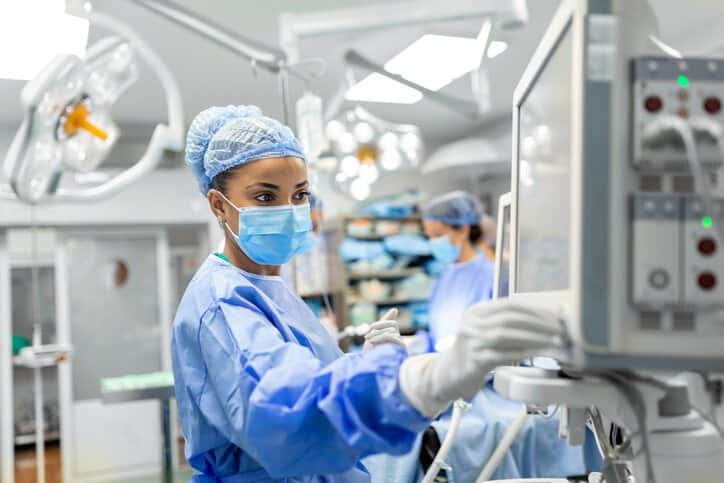Medical device manufacturers are required to design and build quality into their products. This means that they must have processes and procedures in place to ensure that products meet customer needs and performance requirements. AAMI TIR12:2020 (R2023)— Designing, Testing, And Labeling Medical Devices Intended For Processing By Health Care Facilities: A Guide For Device Manufacturers serves as a guide for identifying the questions health care personnel should ask medical device manufacturers.
Importance of Medical Devices
A medical device is an instrument, apparatus, implant, machine, tool, in vitro reagent, or similar article that is used to diagnose, prevent, mitigate, treat, or cure disease or other conditions. Examples include an artificial cardiac peacemaker, cochlear implant, infusion pump, hearing aid, ventilator, syringes, Band-Aid, glasses, artificial heart valve, catheters, oxygen mask, etc. Medical devices achieve their purpose by physical, structural, or mechanical action but not through chemical or metabolic action within or on the body. The benefits they can provide continue to increase as they are essential to prevent, diagnose, treat, and rehabilitate illnesses and diseases in a safe and effective way.
Manufacturers and medical device users have an important role to play in maintaining the risk–benefit balance, by making sure that products are developed, tested, labeled, prescribed, and used in ways that maximize benefits and minimize risk. Companies must document their quality processes and procedures and prove that these are being followed during product development and after market introduction in order for medical devices to be approved or cleared in the US and allowed for sale in major international markets. AAMI TIR12:2020 (R2023) details guidance for medical device manufacturers who need to document these processes and procedures.
What Is AAMI TIR12?
AAMI TIR12:2020 (R2023) provides guidance to medical device manufacturers, who are required to provide instructions that detail processing steps from pre-treatment at the point of use through the terminal process and storage to accompany reusable and single-use medical devices that are processed by a health care facility prior to clinical use.
This technical information report (TIR) details the processes and resources that a health care facility can have for processing devices. This should provide further assistance to medical device manufacturers (MDMs) in developing their processing instructions. Health care personnel have the responsibilities of obtaining/reviewing manufacturers data and recommendations as well as ensuring that they have the necessary resources to follow manufacturer’s instructions thoroughly. AAMI TIR12:2020 (R2023) serves as a resource for identifying the questions health care personnel should ask manufacturers when considering a product for purchase or when devising a processing protocol for a product already being used.
A TIR is not subject to the same formal approval process as a standard. However, a TIR is approved for distribution by a technical committee and the AAMI Standards Board.
America’s Medical Technology
Medical technology saves lives, improves patient outcomes, and helps lower the overall cost of health care. The U.S. is the largest medical device market in the world, comprising over 40% of the global MedTech market. It is also one of America’s strongest and fastest-growing manufacturing sectors, creating and producing medical innovations for use around the world—and providing good-paying jobs across the country. Since 1980, there has been a 38% decrease in the number of patient-days spent in hospitals thanks to medical technologies; from 1980-2019, 5 years were added to the U.S. life expectancy thanks to advancements in medical technology.
Risk Management of Medical Devices
AAMI TIR12:2020 (R2023) details that risk management is “a closed-loop process of identifying areas of potential or known risks, evaluating the probability of the risk occurring, assessing the consequences and severity of the identified risk to patients, health care providers, the health care facility, or other processes within the department, mitigating the risk by implementing controls that will minimize or remove the risk or prevent it from occurring, and then monitoring the controls and reporting the results back into the system.”
There are several steps to the risk management cycle: risk analysis, risk evaluation, risk control, and residual risk acceptability. Medical device manufacturers must establish a risk management process that is within the framework of and complies with ISO 14971 irrelevant of whether medical devices are being developed in the US, EU, Canada, or elsewhere. Every international regulatory agency accepts ISO 14971. To learn about this standard in more detail, check out ISO 14971:2019–Risk Management To Medical Devices.
What Processing Instructions Do Medical Device Manufacturers (MDMs) Provide?
According to AAMI TIR12:2020 (R2023), the objectives for processing a medical device are to:
- Render the reusable medical device safe for handling by health care personnel
- Prepare the medical device for the next step in processing
- Make the device ready for use on the next patient
AAMI TIR12:2020 (R2023)— Designing, Testing, And Labeling Medical Devices Intended For Processing By Health Care Facilities: A Guide For Device Manufacturers is available on the ANSI Webstore and in the following Standards Packages:
